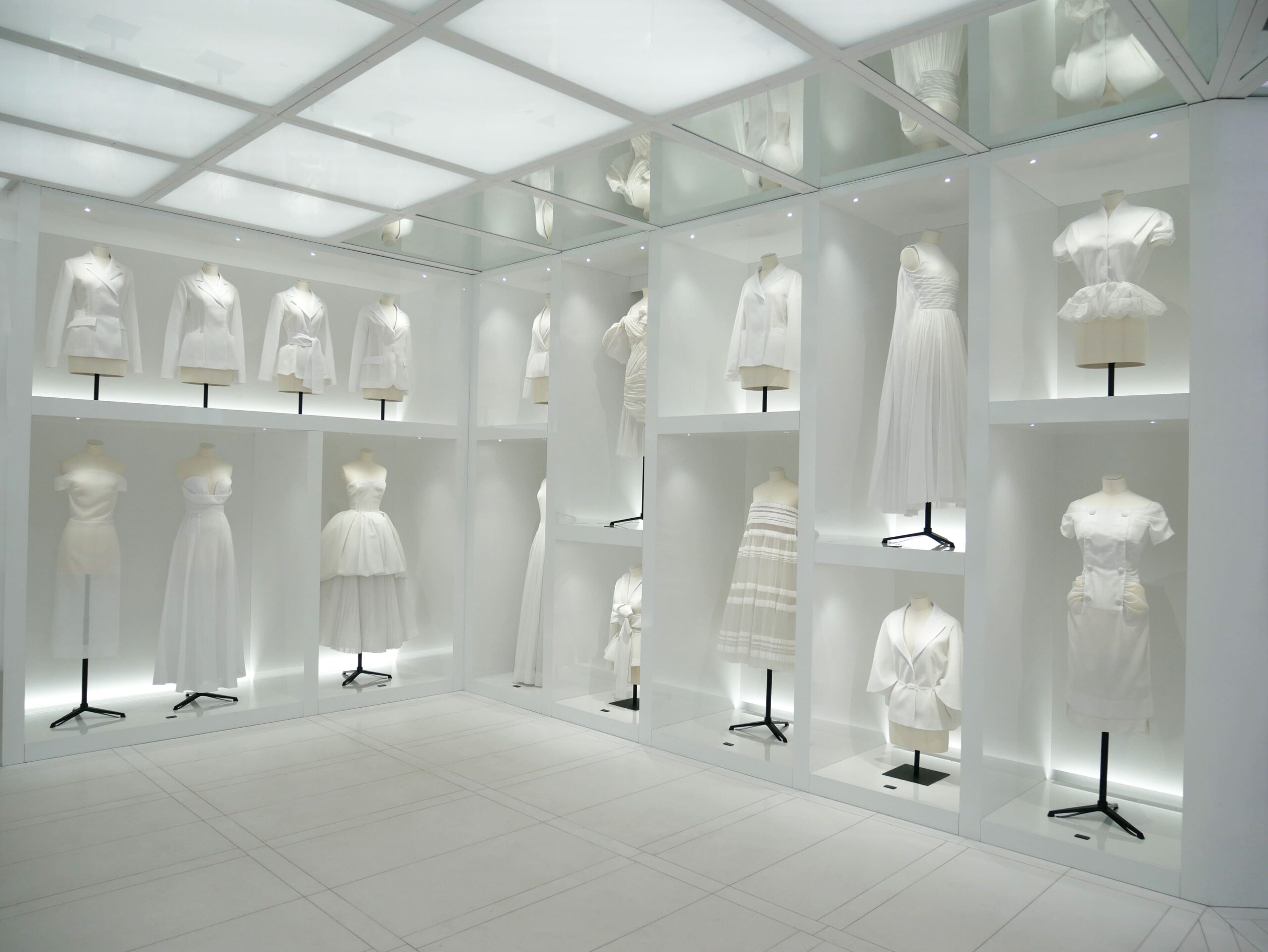September 2023
Is your fashion e-commerce bottom line negatively impacted with exchanges and returns? Check out these suggestions
Ester Bazzanella

If you are in fashion e-commerce you know that exchanges and returns can become a big headache and generate huge financial loss.
Returns is one of the main concerns for online retailers and according to a survey conducted by Invesp, 30% of all products purchased online are returned. When compared to the high street which present on average 8.89% in product exchanges the difference is enormous.
The return dilemma is incremented due to the fact that a customer does not have physical contact with the product. On the other hand, when brands do not invest in a good online experience when it comes to choosing the right size, customers’ insecurity increases.
A Barclaycard survey showed that 41% of buyers deliberately over-buy and return unwanted items. This, of course, increases the number of exchanges and returns and presents a worrying loss for e-commerce, which includes processing costs, in terms of personnel and resources and environmental costs as well as the risk that the returned items can not be resold.
Before trying to solve this problem, it is necessary to understand why the number of exchanges and returns has increased. For this purpose, we present below some of the reasons that lead consumers to return products.
Why do customers return products?
There are several reasons why consumers exchange products, and they range from loss of interest in the chosen item to failures in the e-commerce itself. Lets analyse some of them.
1- Poor product description
As we have already discussed here, the lack of contact with the product generates insecurity in buyers and when they realize that the product does not match the description, frustration can make customers want to return the item.
Therefore, the description of the products must go far beyond simply detailing the characteristics of an item, it must be able to create interest in the potential buyer.
A well-described product contributes to increasing your brand’s authority, and it is always worth remembering that customers expect their needs to be satisfied. Therefore, the brand who is more aware of what the public needs is definitely going to have an advantage over competitors that don’t.
2- Delivery issues
It is not enough to just have an attractive website that brings in potential buyers, it is also necessary to make sure that the product that was bought arrives safely and according to the promised delivery date.
Errors in transportation and delivery can definitely harm the image of your brand and e-commerce shopping experience, in addition to the extra expense necessary to reverse this bad image.
3- Ordered more than one of the same item
Many consumers end up buying excess products (such as different sizes of the same piece), already counting on the exchange and returns service offered by the brand.
This can occur due to lack of confidence when buying the product, because of the lack of sizing tools, like a Virtual Fitting Room, the consumer has difficulties in knowing what the correct size is or how the item will actually look on their body
4- Lost interest in the item
It is also common for shoppers to impulse buy or realize, in a short period of time, that they could have purchased another product, and possibly even elsewhere.
Something happened that frustrated the shopper and it is up to the e-commerce team to discover why and improve the CX. With a huge variety of products and online stores, customer loyalty has become increasingly volatile.
For this reason, we recommend investing in offering the best customer experience after-sales support, as this plays a fundamental role in strengthening the link between the brand and their customers.
How to avoid exchanges and returns?
As we have already seen, exchanges and returns can happen when the shopper is unhappy with the product that they bought, whatever the reason may be. Below are some suggestions that can help you avoid customer’s insatisfaction.
Clear and detailed product description
Describing the specifics of your product is essential to prevent your customer from returning the product as it did not match what was described online.
Fashion e-commerces has a high risk of losing sales due to lack of product information, the purchase is made without confidence and this makes it difficult for the consumer to make a purchase that they are sure about.
Describe in detail the items on your website, in fashion sales highly depend on the images that are being used to describe the product.
Although the quality of the photos and the style are important for buyers looking at clothing and shoes, be careful that the images are faithful to the actual item, as it can generate great frustration in your customers.
Another tip is to use photos with high resolution, as they can be enlarged to evaluate the more specific details of the clothes or accessories. This is a necessary requirement for a secure purchase.
You can also use videos, 360° views, manufacturing characteristics (such as composition and fabrics) and inform what size the models are wearing in the photos, in addition to using different mannequins with different measurements so that the items fit is visible.
Watch your shopping cart!
It is common that the customer doesn’t even realize that s/he has added a product in their shopping cart or something may have already been there due to an old abandoned purchase.
The mismatch between what was ordered and what was delivered can create an unsatisfied customer, and this frustration can prevent them from buying again in the future.
Our suggestion is that you pay close attention to the layout of your website, especially, the checkout tab. It is common that information located there or even the usability may not facilitate the purchase and may lead to an error made by the shopper who is attempting to make a purchase.
Size and fit matter and make a difference.
When a garment that is bought online does not please the customer two things can happen: an exchange or return, if the shopper is willing to go through all the procedures of reverse logistics or s/he simply ignores it and will not buy anything again from that brand.
Both options are very problematic, in both options the customer definitely did not have a good shopping experience, and it is very evident that happy customers always come back!
To get around this type of problem, you must invest in tools that provide security to the customers in relation to size and fit and you must also personalize the entire purchase process, with tools such as the Virtual Fitting Room that simplifies the measurements and is able to provide the perfect size and fit recommendation.
How to facilitate reverse logistics?
We talked about what makes the consumer return or want to exchange the purchased product, but now what? How can this reverse logistics process be less costly and stressful?
Have organization with the orders being made!
Be careful before shipping products. Check and make sure to send the correct product and make sure it is being sent undamaged. Defects appear on average in 23% of the reasons for exchanges and returns. Think of ways to create processes, test products, and their validity when appropriate.
A practice that can also help is to keep an organized stock. Not only to avoid delivery errors but also to facilitate logistics and speed up all necessary steps.
Be punctual with your delivery and offer a top-level service. This will have a positive impact on the customer and prevent the purchase from being returned because it “arrived too late” or only part of the order has arrived.
Make your exchange and return policy clear! Do not think that complicating this process will make it less used. This will only frustrate your customers who want to return one of your products and still leave a bad impression regarding your e-commerce.
Implementing a FAQ or frequently asked questions can also assist in this entire reverse logistics process. If you still have doubts about what else can hinder your conversion, click here and read the top 5 reasons we described in another post.
Is it possible to reset exchanges and returns?
Unfortunately not, but no matter what product you sell, it will never be possible to always please and satisfy all customers.
Therefore, reducing returns and exchanges is the most logical goal for your e-commerce to get around all the expenses that are involved in this process.
And it is always important to take into account the customer experience in your e-commerce. A smooth purchase can generate customer loyalty, even if by chance there is an exchange and/or return. Pre and post-sale care are important to avoid dissatisfaction and distrust that can end the chances of that customer coming back.
Therefore, it is important to invest in tools that bring more security to consumers when making a purchase. The Virtual Fitting Room has helped e-commerces by giving their customers more security when they receive size and fit recommendations according to their measurements and body type.
The Virtual Fitting Room’s objective is to help the buyer choose the correct size, and we know that a more assertive involvement in the choice generates greater commitment and, therefore, less exchanges and returns.
Brands need to adapt to the public’s consumption needs, thinking about alternatives and investing in technologies that create security in consumers when making a purchase.
Does any of the above issues sound familiar? Have you managed to identify where you need to improve in order to decrease the percentage of exchange of your e-commerce?







